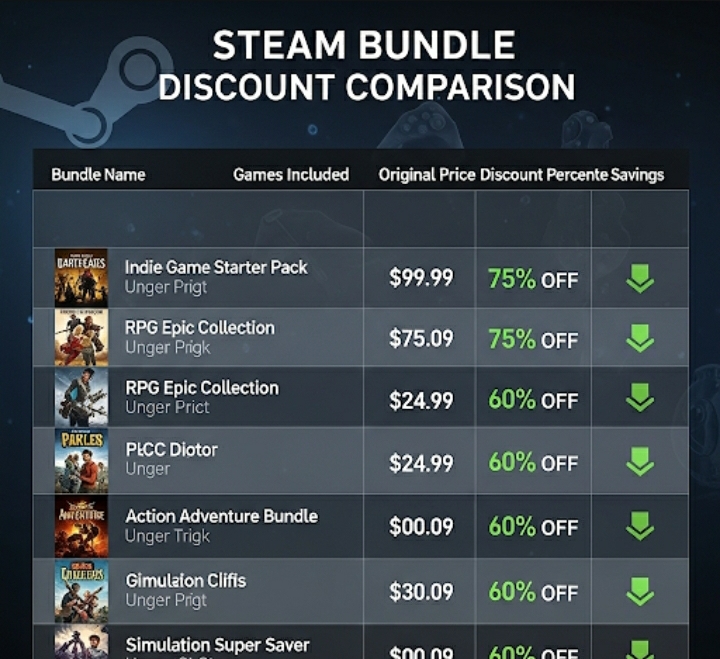Last Tuesday, I watched my friend Jake spend $200 during Steam’s surprise midweek sale, only to realize three of those games would be 75% cheaper during the upcoming Summer Sale. His wallet-draining mistake got me thinking about how many gamers miss out on incredible savings simply because they don’t know when and where to look for the best deals.
Steam sales have become legendary among PC gamers, but navigating them successfully requires more than just luck. This ultimate guide to Steam sales will teach you insider strategies to maximize your savings, avoid costly timing mistakes, and build an impressive game library without breaking the bank.
You’ll discover seasonal sale patterns, third-party deal tracking tools, wishlist optimization techniques, and advanced strategies that veteran Steam users employ to score games at their absolute lowest prices. Whether you’re a budget-conscious student or someone looking to expand their gaming horizons, these proven methods will transform how you approach Steam shopping.
Understanding Steam’s Major Sale Events
The Big Four: Steam’s Seasonal Blockbusters
Steam operates on a predictable seasonal schedule that savvy gamers mark on their calendars. The Summer Sale (typically June-July) and Winter Sale (December-January) represent the platform’s biggest events, featuring discounts up to 90% on thousands of titles.
Spring and Autumn sales offer smaller but still significant savings, usually targeting specific genres or publishers. Halloween sales focus on horror games, while the Steam Awards celebration brings surprise discounts on winning titles.

Daily Deals vs. Flash Sales: What Changed
Veteran Steam users remember the anxiety-inducing flash sales that required checking every eight hours. Valve simplified this system in 2015, making sale prices consistent throughout each event. This change means you can safely purchase any discounted game without fear of it becoming cheaper later in the same sale.
However, understanding this evolution helps explain why some older guides mention “waiting for flash sales” – advice that’s now obsolete but still circulates online.
Advanced Deal-Finding Strategies
Mastering Third-Party Price Tracking
While Steam shows current prices, dedicated tracking websites reveal historical pricing data that’s crucial for smart purchasing decisions. IsThereAnyDeal aggregates prices from legitimate key sellers, while SteamDB provides detailed historical charts showing a game’s price evolution.
I discovered this strategy when tracking Cyberpunk 2077. Instead of buying it at launch for $60, price tracking showed similar AAA titles typically hit 50% off within six months. Patience paid off when I snagged it for $30 during the Summer Sale.
Wishlist Optimization Techniques
Your Steam wishlist isn’t just a reminder tool – it’s a powerful deal-hunting weapon. Steam prioritizes wishlist notifications, sending emails when your desired games go on sale. More importantly, the wishlist page during sales shows percentage discounts, making it easy to spot the deepest cuts.
Pro tip: Add games to your wishlist even if you’re not immediately interested. Price alerts can reveal seasonal patterns and help you identify the optimal purchase timing.
Budget-Friendly Shopping Tactics
The $10 Rule and Bundle Strategies
Experienced Steam shoppers often follow the “$10 rule” – never spending more than $10 on a single game unless it’s a day-one must-have. This approach forces you to wait for substantial discounts and prevents impulse purchases on overpriced titles.
Steam bundles present another savings opportunity. Publisher bundles during sales often discount individual games further when purchased together. Humble Bundle and Fanatical also offer Steam key bundles that can beat Steam’s own pricing.

Regional Pricing and VPN Considerations
Steam implements regional pricing, meaning games cost different amounts in various countries. While using VPNs to exploit regional pricing violates Steam’s Terms of Service and risks account suspension, understanding these differences helps explain price variations you might encounter.
Focus instead on legitimate regional sales – Steam occasionally offers region-specific promotions that provide better deals than global sales events.
Deal Comparison and Research Tools
| Tool | Best For | Key Features | Cost |
|---|---|---|---|
| IsThereAnyDeal | Price comparison | Multi-store tracking, historical data | Free |
| SteamDB | Steam-specific analysis | Detailed charts, player counts | Free |
| Augmented Steam | Browser integration | Price history overlay, bundle detection | Free |
| GG.deals | Comprehensive tracking | Keyshop monitoring, price alerts | Free/Premium |
Timing Your Purchases for Maximum Savings
Seasonal Patterns and Predictable Cycles
Steam sales follow predictable patterns that smart shoppers exploit. New releases rarely discount significantly during their first six months, but patient buyers can expect 25-50% reductions during major seasonal events.
Indie games typically discount faster and deeper than AAA titles. I’ve noticed indie developers often use Steam sales to boost visibility, sometimes offering 75% discounts within months of release.
The 30-Day Rule for New Releases
Avoid purchasing new releases at full price unless you plan to play immediately. Steam’s refund policy allows returns within 14 days if you’ve played less than two hours, but the 30-day rule prevents impulse purchases entirely.
Most games see their first discount within 30 days, even if it’s just 10-15%. Waiting this brief period often saves money while providing early reviews to inform your decision.
Advanced Savings Techniques
Steam Points and Community Market
Steam’s points system, earned through purchases and activities, unlocks emoticons, backgrounds, and seasonal rewards. While these items seem cosmetic, active traders can sell them on the Community Market for Steam Wallet funds.
I’ve accumulated over $40 in wallet funds by selling trading cards and seasonal items – essentially getting free money toward future purchases.
Leveraging Steam’s Refund Policy
Steam’s generous refund policy becomes a deal-hunting tool when used ethically. You can purchase games during sales, try them briefly, and refund those that don’t meet expectations. This approach works best during major sales when you’re considering multiple titles.
Remember the 14-day/2-hour limits, and don’t abuse this system – Valve monitors refund patterns and may restrict accounts showing suspicious behavior.
Building Your Game Library Strategically
Genre-Specific Sale Patterns
Different game genres follow distinct discount patterns. Strategy games and simulators often see deeper discounts than competitive multiplayer titles. Horror games reliably discount during October sales, while racing games frequently bundle together during summer events.
Understanding these patterns helps you plan purchases around predictable sale cycles rather than impulse buying at random times.
The Backlog Balance
Resist the temptation to buy every discounted game that catches your eye. Steam’s sales create artificial urgency, but most discounts repeat regularly. Focus on games you’ll actually play within the next few months rather than building an enormous backlog.
I learned this lesson after accumulating over 200 unplayed games – a common affliction among Steam users seduced by impressive discount percentages.
Conclusion
Mastering Steam sales requires patience, planning, and the right tools. By understanding seasonal patterns, leveraging price tracking websites, and timing your purchases strategically, you can build an impressive game library while spending significantly less than casual shoppers.
The key lies in shifting from reactive to proactive shopping. Instead of browsing sales randomly, wishlist games in advance, track their pricing history, and purchase only when prices hit historical lows.
Ready to become a Steam sale expert? Start by setting up price alerts on IsThereAnyDeal for three games you’ve been wanting, then share your best Steam sale discoveries in the comments below. Which strategies have saved you the most money?
Frequently Asked Questions
When is the next Steam sale?
Steam typically holds major sales during summer (June-July), autumn (October-November), winter (December-January), and spring (March-April). Smaller themed sales occur throughout the year, often coinciding with holidays or game anniversaries.
How long do Steam sales usually last?
Major seasonal Steam sales typically run for 10-14 days, while smaller themed sales might last 3-7 days. Daily deals and weekend promotions usually last 24-72 hours respectively.
Should I buy games immediately when a sale starts?
Yes, since Valve eliminated flash sales in 2015, sale prices remain consistent throughout each event. You can safely purchase discounted games immediately without worrying about deeper discounts appearing later.
Can I get Steam games cheaper elsewhere legally?
Authorized key resellers like Humble Bundle, Fanatical, and Green Man Gaming often offer competitive prices on Steam keys. Always verify seller legitimacy through IsThereAnyDeal to avoid fraudulent key sources.
What’s the biggest discount Steam has ever offered?
Steam regularly offers discounts up to 90% during major sales, particularly on older indie titles and classic games. Some promotional events have featured temporary 95% discounts, though these are extremely rare.
How can I avoid buying games I’ll never play?
Implement the “immediate play” rule – only purchase games you plan to install and play within a week. This prevents backlog accumulation and ensures you actually enjoy your purchases rather than just collecting discounted titles.
Sources:
- Steam Store Policies and Terms of Service – https://store.steampowered.com/subscriber_agreement/
- PC Gaming Market Analysis – https://www.statista.com/outlook/dmo/digital-media/video-games/pc-games/worldwide
- Digital Game Pricing Research